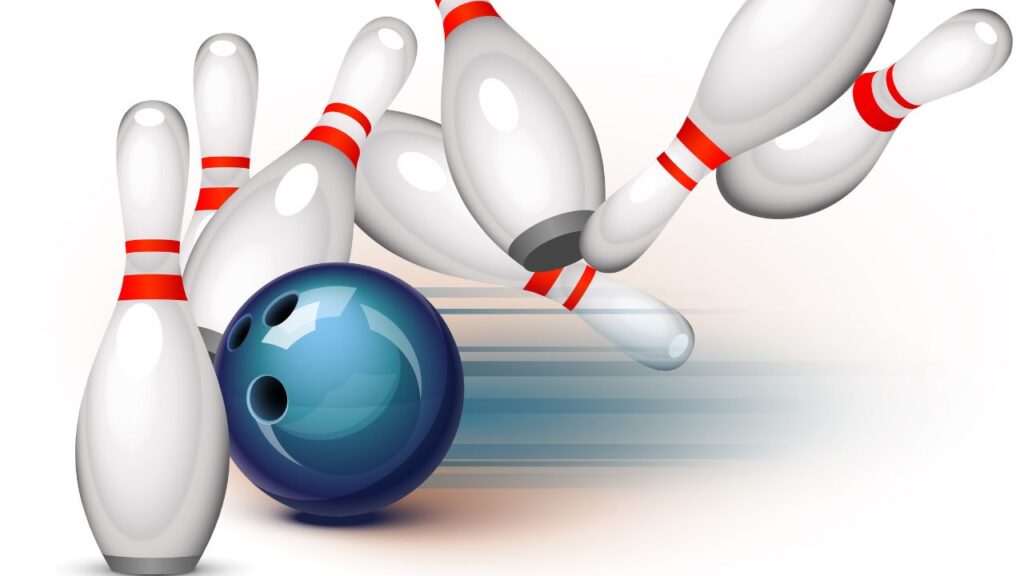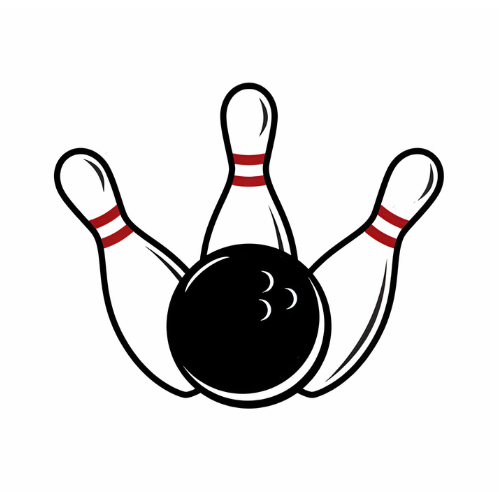Bowling ball motion creates a significant difference in it’s friction and apparent hook. Ultimately, the motion affects your performance and scoring while playing the bowling ball. Understanding the motion chart also helps to improve your score when you’re a novice bowler. Therefore, you must understand the bowling ball motion chart whether you buy or customize your bowling. Besides the motion chart, you also have to discover the causes of the bowling ball’s motion and reaction. Undoubtedly, you’ll stay till the end of our discussion as we will explore the motion types and their influencing factors. Here we begin!

What Different Types of Motion Does the Bowling Ball Have?
There are mainly 4 types of bowling ball motion – traction, continuous, angular, and straight. The specific types are covered based on Coverstock, finish, RG numbers, core type, and manufacture intent of a bowling ball. Here we broke down 4 types of bowling ball motion with a chart and discussed those classifications deeply.

Now, let’s discuss the types of bowling ball motion in in-depth detail.
Traction (Earliest)
The bowling ball with the aggressive Coverstock provides early and more traction to your bowling ball. And, the bowling ball having good traction is advantageous for the heavy and long oil lane pattern. Honestly, the traction provides more hook to your bowling ball, particularly in the oilier lane condition. Furthermore, the traction lowers the rev rates of the bowlers when playing with a bowling ball. For the right-handed player, the traction bowling ball motion exits over 9 pins.
Continues
If you want to get the most common bowling ball motion of the time, select the bowling ball with continuous motion. Once after starting, the continuous bowling ball motion splits 8 to 9 pins at a time. The motion hooks the bowling ball comparatively lower than the traction bowling ball motion. Nevertheless, they offer higher hooks compared to angular motion.
Angular
When you play with the angular motion bowling ball, it becomes much more fun and enjoyable to watch. Honestly, the angular and sharp motion dramatically benefits the players and spectators. The angular type shooting provides good hooking and sharp move before reaching the pocket. A bowling player will need to open up the broken lane. Indeed, broken-down lanes are the most suitable to play with the angular bowling ball motion.
Straight
The straight bowling ball motion is preferable for beginners as it’s used when shooting the ball in spare places. After stepping into the bowling ball world, the bowler at first learns the straight-shooting. Similar to other motions of the bowling ball, the straight motion doesn’t offer to hook or curving to the ball. Instead, you can shoot the ball in a straight line after learning the straight bowling motion. Typically, the bowlers use the plastic spare ball or flatten their hands to make the straight throw.
What Speed Should You Throw the Bowling Ball to Get the Right Motion?
As a beginner bowler, the ideal bowling ball speed should be at least 16-17 mph till the end. After getting released, the ball loses some of its speed (about 3.5 mph) till it reaches to hit the pins. Therefore, when you release the bowling ball at 20-22 mph, it’ll hit the pins at 17-18 mph. Most pro-level bowlers release the bowling ball at 20-22 mph speed. Ultimately, they get the desired level of bowling speed till the pins get closer. If you want to hold the bowling speed at 17 mph till the end, you must deliver the ball at least 21 mph.
What Are the Things Affected by Bowling Ball Motion?
You’ll readily get a bowling ball with a particular motion or can customize the motion of your bowling ball. Regardless of what you apply to get a specific motion, you must learn what affects the bowling ball’s motion. There Are some specific features of your bowling ball that affects its motion, and they are:
Coverstock /Surfaces Finish
The surface or coverstock finish of your bowling ball is an essential factor that influences its motion and reaction. The coverstock’s chemical composition decides the bowling ball’s speed on the lanes. If you select the high-grit bowling ball, play on dry-medium lanes. Furthermore, the owner of a low-grit bowling ball is suggested to play on the oil-pattern lanes.
Ball Dynamics
The aggression of the bowling ball’s coverstock is massively related to its dynamics. Undoubtedly, the core shape and density indicate the bowling ball’s properties. And the properties of the bowling ball affect its dynamics. Ultimately, the dynamics of a bowling ball provide a lot of information about its properties and motion. Therefore, you’ll get to know the motion of the bowling ball and create the right throw.
Static Weight Balance
If you want to achieve the desired motion and reaction of a bowling ball, you can’t overlook its static weight balance. After the dynamics and coverstock finish, the static weight balance heavily affects the bowling ball’s performance. You must locate the right place and adopt the drilling technique when drilling the bowling ball’s layout pattern.
Rev Rate
The RG Values, Rev Rate, and total values highly affect the bowling ball’s motion. So, before you make your throw, you’d better learn the importance of your bowling ball.
Delivering Speed and Style
The delivery speed and style of the bowling ball influence its motion and reaction. At the low-speed delivery, the bowling ball produces a forward roll and a controlled amount of hook. Contrarily, the bowling ball produces the decisive backend direction and more spin at the high-speed delivery.
Bowling Ball Core Type
Based on the core types and shapes, the bowling ball provides a variable amount of track flare. Ultimately, we can say that the core type of bowling ball affects its motion and reaction.
Drilling Layout
When customizing the bowling ball, you can control its layout and design; ultimately, you’ll control the reaction of your bowling ball. Use various layouts to move the positive axis point toward improving the weight of the bowling ball.
Friction
The greater friction creates wider spin and overall motion after throwing the bowling ball toward its endpoint. Ultimately the friction of the bowling ball influences its motion. Usually, the bowling ball delivers greater friction and more changing motion on the oily lanes. In comparison, things become entirely opposite when you throw the ball in the dry lane.
Influence of Bowling Ball Motion
You’ll find many key terms that are vital for any careerist bowler to understand, such as breakdown, carry-down, lane stiffness, and oil thickness. Others, such as temperature and humidity, are things many bowlers never consider. But it may change your pace. So you have to know about your lane characteristic before bowling. It influences bowling motion.
Weight of The Ball
The lighter bowling ball creates less friction and higher rolling, consequently lowering the motion. Contrarily, the heavier bowling ball creates higher friction and reduces the rolling but increases the motion.
The Sum Up!
Apparently, you’ve reached the end of our bowling ball motion chart and got their influencer. Move aside, quite fun; if you understand the deepness of motion, you’ll admit it can alter the picture of your game.
